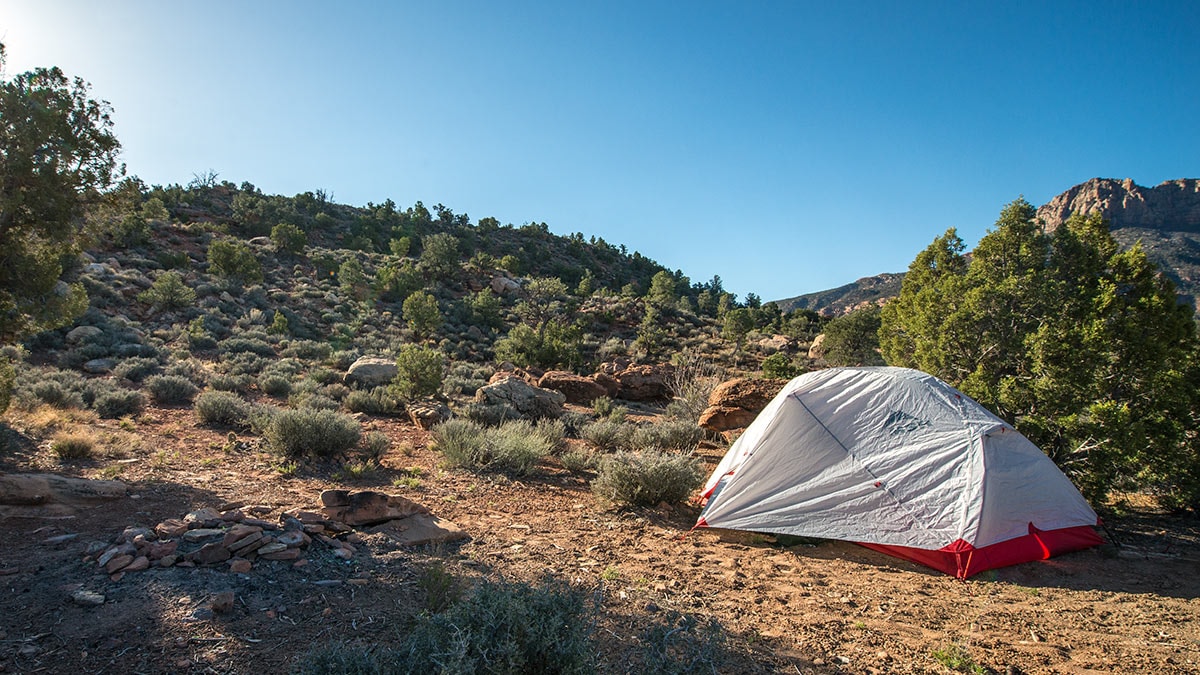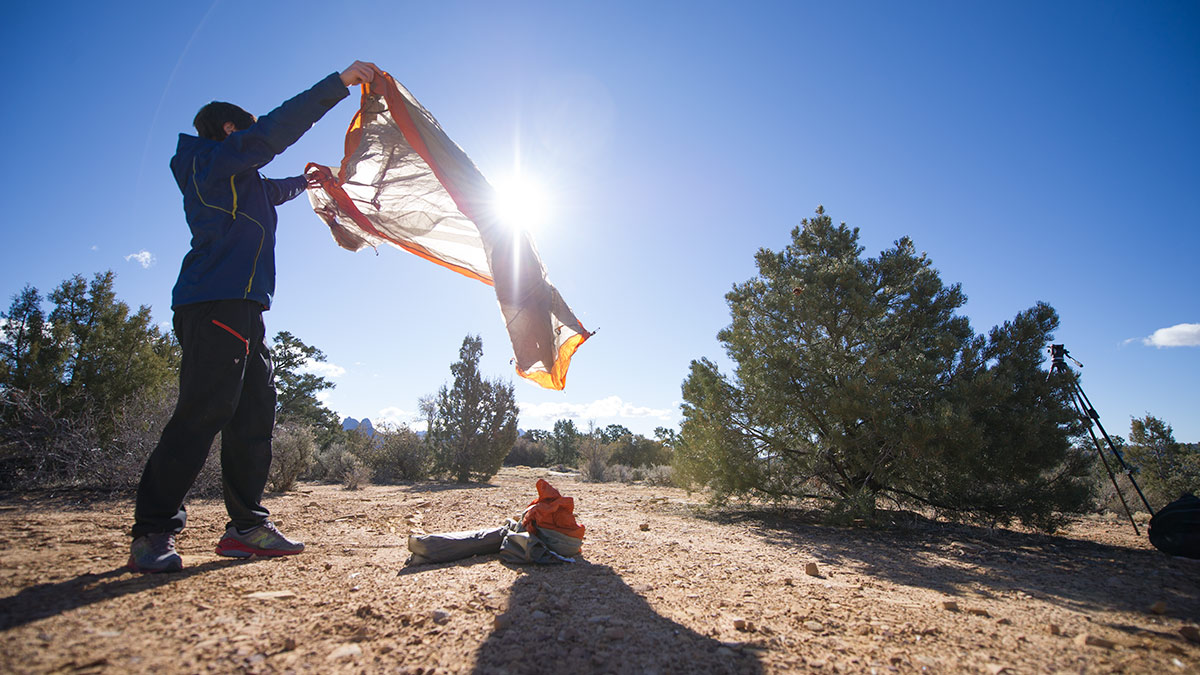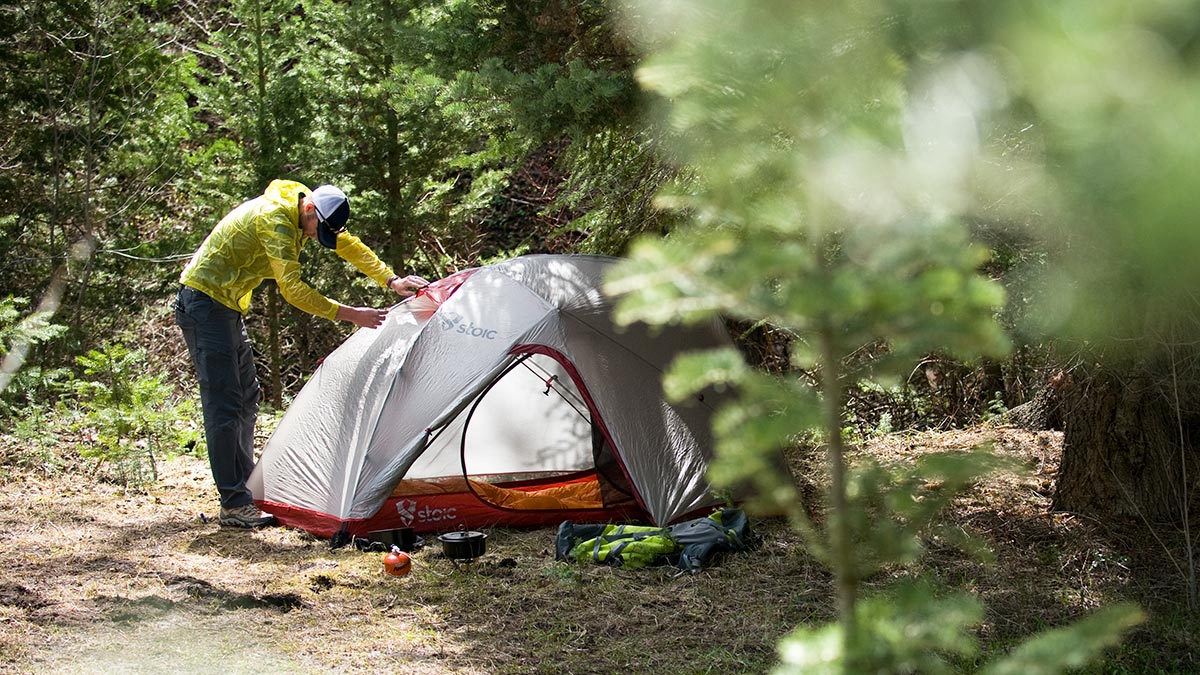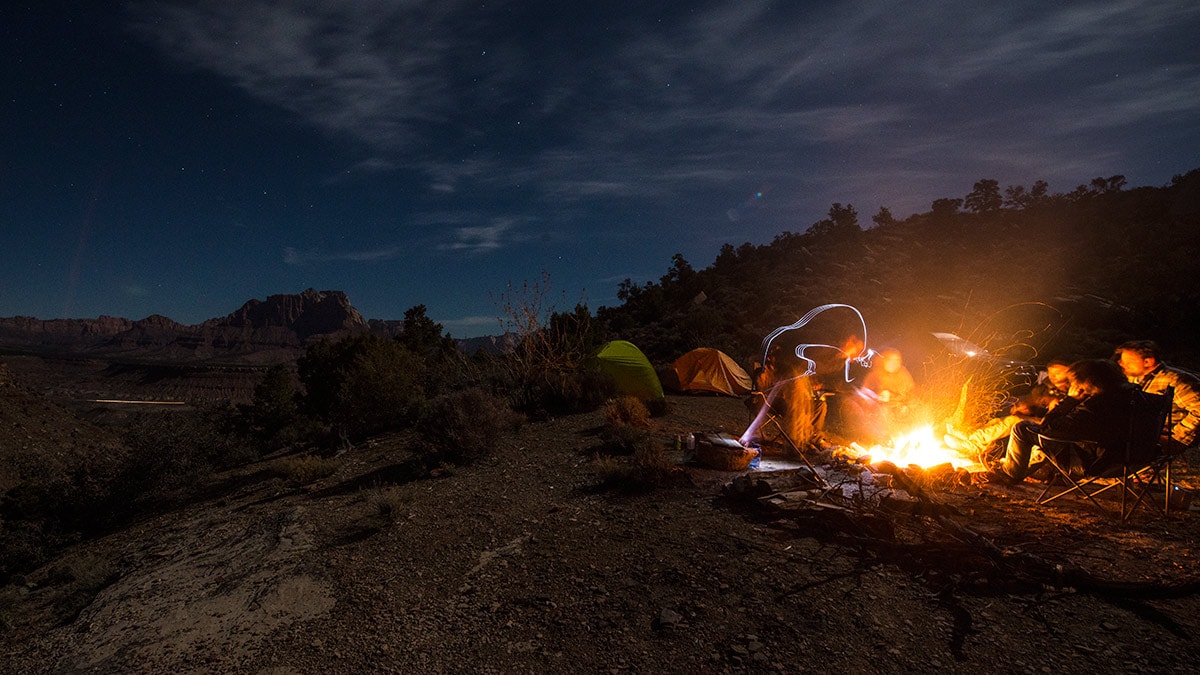Of course, you’re not going to make a yeasty, fluffy loaf – that requires 24 hours to rise – but who cares, anytime someone offers to make freshly baked anything on an outdoor trip it’s impressive.
Flatbread is one of the easiest “gourmet” ideas you can make on a camping trip. The key is to prep batches of dry mix before you go, double bag it (you don’t want flour on the loose in your backpack) and then mix with some water when you’re ready to cook up your meal. Note that the only downfall of cooking flatbread outdoors is that you are often stuck washing slightly floury, sometimes sticky hands, which is more of an endeavor than when you have easy access to running water.
This base recipe allows for a lot of flexibility and variation. You can add spices to it, which I recommend, as the base recipe is really just water and flour and not very high on the taste scale. This summer on a backpacking trip I made a batch with cumin powder and that works great as an accompaniment to a pot of spicy red lentils, It’s essentially the backpacker’s naan, so, for example, if you want a garlic naan, roll the dough in finely chopped garlic before frying.

This bread is best served fresh, but if you have a few rounds of flatbread left over, place them overnight in a container with a lid to keep them from drying out, and slather with peanut butter and honey in the morning. Instant breakfast.
The recipe makes about four flatbread rounds, perfect to go with a dinner for two people. You can easily double, triple, or even quadruple this batch depending on how many flatbreads you are going to want to make on your camping trip. Feel free to experiment with different flour blends as well. For example, I like to use half all-purpose or whole wheat flour and half rye flour, which makes for a flatbread with a bit more flavor to it. Which flour you use will slightly change how much water you need to add when you make the dough, so go slowly. You can always add a little more water as needed.

Makes: About 4 flatbread rounds.
1 cup all-purpose flour (whole wheat pastry flour also works well)
1 teaspoon baking powder
½ teaspoon salt
About a…“ cup (2.75 ounces, 80 milliliters) water
Oil for frying
Ideas for potential variations:
1 teaspoon cumin powder or
1 teaspoon caraway seeds or
2 tablespoons sunflower seeds
Preparation:
In a bowl, mix together the dry ingredients. Place in a container that you know is going to stay closed when you pack it (double bagged for example, or in a reusable bottle with a screw on lid).
When ready to bake, add about half of the water to the dry ingredients. Mix together until the dough is crumbly. Add the rest of the water (more or less as needed) until the dough comes together.
Form the dough into four balls, then flatten them into rounds a little less than ¼-inch thick.
Fry in a lightly oiled pan (essentially any flat, hot surface that you can make with your outdoor cooking supplies) for about 2 to 3 minutes on each side, depending on thickness. You can also cook the flatbread on top of a grill if you’re doing that kind of camping, the end result will have a slightly smoky flavor to it.
Serve immediately.
Visit here for more interesting information:
https://www.adventure-journal.com/2015/09/how-to-make-camp-bread-while-actually-camping/
For more information:
Blog Table of Contents
Top Rated Prepper Handbook Posts of all time
Or click on a label below for similar topics.








